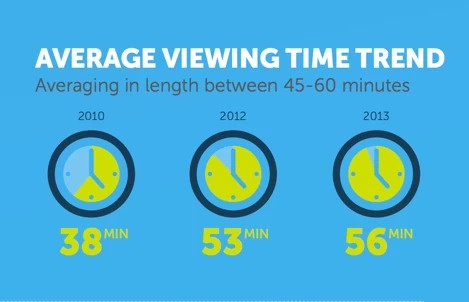Webinars may seem like an easy thing to do: Turn on your computer, upload a slide deck and share your screen, right? Not exactly. With all the details that go into creating a successful online webinar, there is quite a bit to consider from the technology to how you will track and nurture the leads.
According to the CMI marketers consistently rate webinars among the top 12 most frequently used tactics, and among the top five most effective.
Set your company up for success from the beginning by following these 7 webinar best practices:
- Find technology that works for you
- Plan and create a timeline for the webinar
- Decide who will be involved
- Make your presentation professional and engaging
- Generate registrations
- Deliver your online webinar
- Track results and nurture leads
Find technology that works for you
While most are familiar with platforms like Cisco’s WebEx, there are several other providers out there today that come in at varying price points and offer different features. Check out this comparison tool by OnStreamMeetings.com, and this list on WebEx alternatives for more information on webinar providers.
Decide if you will use the built-in computer mic, an extended USB mic or the phone audio mic. Test the sound and screen visual in practice sessions with a colleague watching from another room. Determine the best distance between your mouth and mic and the best speaking volume.
If you want to record the webinar, make sure the feature exists in the platform you choose. Ask a colleague to remind you to hit the record button as your mind is focused on speaking right when you start.
Plan and create a timeline for your online webinar
Decide the purpose of the webinar, for example, lead generation, product demo, or training and education. There are a lot of moving parts in a webinar, from getting the actual presentation together to marketing it. Sketch out a timeline that puts dates and assigns people to your tasks.
Consider tasks like setting a registration goal, creating a landing page for people to sign up in exchange for an email, sending out emails and defining how often, and promoting via social, press releases, paid search, your newsletter and your blog.
Decide who will be involved
Pick a speaker who knows the subject matter well, is relaxed when speaking to an audience and who is also engaging. Not every attendee stays to the end, so finding a speaker that fits the bill here may help keep everyone longer.
You may also consider co-presenters, either from the same or different companies, to break up the monotony of one speaker.
Also, a webinar moderator and/or producer as a third (or fourth) person on the event can keep the audience and technology portions running smoothly.
Make your presentation professional and engaging
Decide on a length of your webinar, and make the visual component count. Some believe in the “10 slides in 20 minutes” rule, as endorsed by Guy Kawasaki.
Make sure your slide deck looks professional (as in free from spelling errors and laid out well), and engages people with imagery versus just a bunch of bullets or text. No one wants to sit through a speaker just reading text on the slide.
Create a theme and a story, and guide attendees through it with your words and the imagery on the screen. 
Generate registrations
At BrightEdge we have been doing 30-minute marketing webinars, which makes it easier for people to fit into their schedules. We do 1-hour webinars for product release updates. Building registrants for the webinar is the most critical step to building value.
Plan for at least two waves of outbound email and expect less than 50 per 10,000 to sign up. Webinars are a great way to change up the conversation sales people have with prospects.
Publish your webinar schedule to your sales team and let them invite their prospects. Expect about 50% of your registrants to attend the webinar. Integrate your webinar platform registration into your CRM to improve tracking and appropriate follow-up.
Deliver your webinar
Plan to deliver your webinar and leave 5-10 minutes for questions. When you deliver your webinar, you should ideally have 2 assistants: one for audio visual check and one for handling the questions. Most platforms have a question ask feature, but it can be stressful for the presenter to both process and answer the questions.
Try having a different person read the questions and ask the questions out loud into the mic. This creates a radio show-style format that can be entertaining and work well.
Track results and nurture leads
Make sure that tracking is set up (at the very least using Google’s URL builder) so you can see which promotional events drove the most conversions through this stage of the buyer's journey. That also means setting up goals to track (and if you’re using Google Analytics, you can learn about setting up goals here). You’ll also want a plan for how to nurture your leads after the webinar.
Now that you have their emails, you’ll want to continue to be helpful to them by providing useful information. This usually starts with a thank-you email, giving them a link to download the full webinar. It continues with an email “drip” campaign that you use to move them to another conversion action over time, like perhaps a live demo of your product.
Below are a few examples of marketing webinars that we do at BrightEdge that bring solid results:
- SEO and Page Reporting
- SEO and Site Migration
- SEO and HTTPs
- SEO and Global Success
- SEO and Local Success
- SEO Backlink Audit
- SEO and Using Schema
A company’s webinars inevitably get better with time and practice, so don’t let the fear of not having a perfect webinar right out of the gate stop you from using this channel of communication to inform and educate to your target audience.
